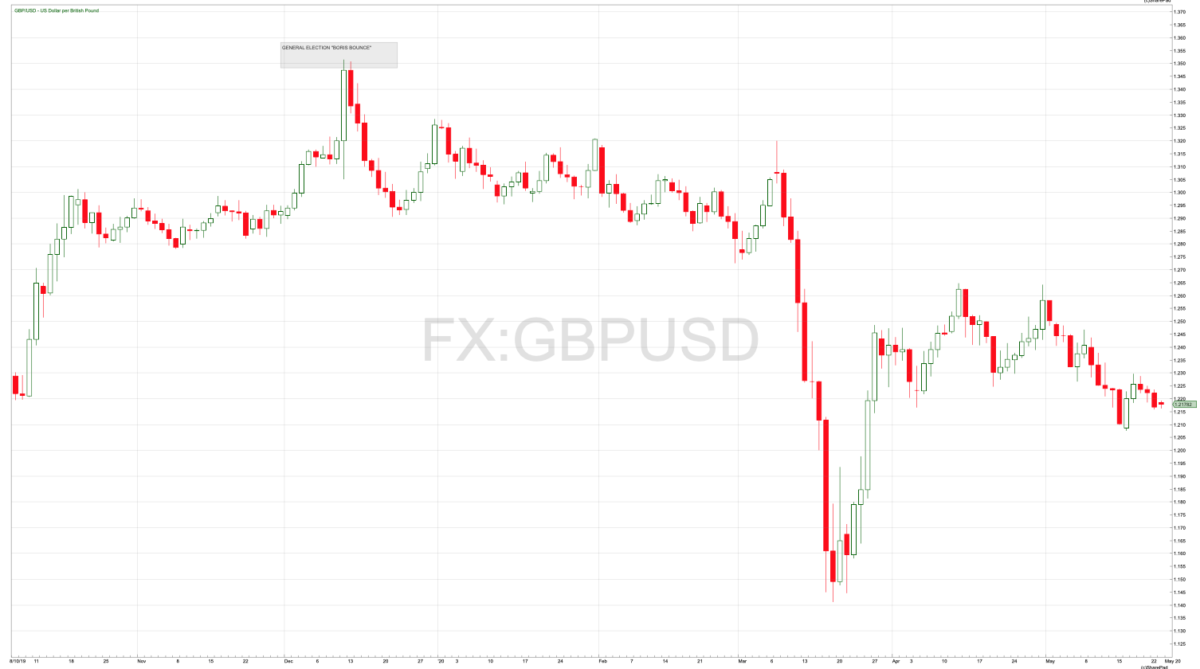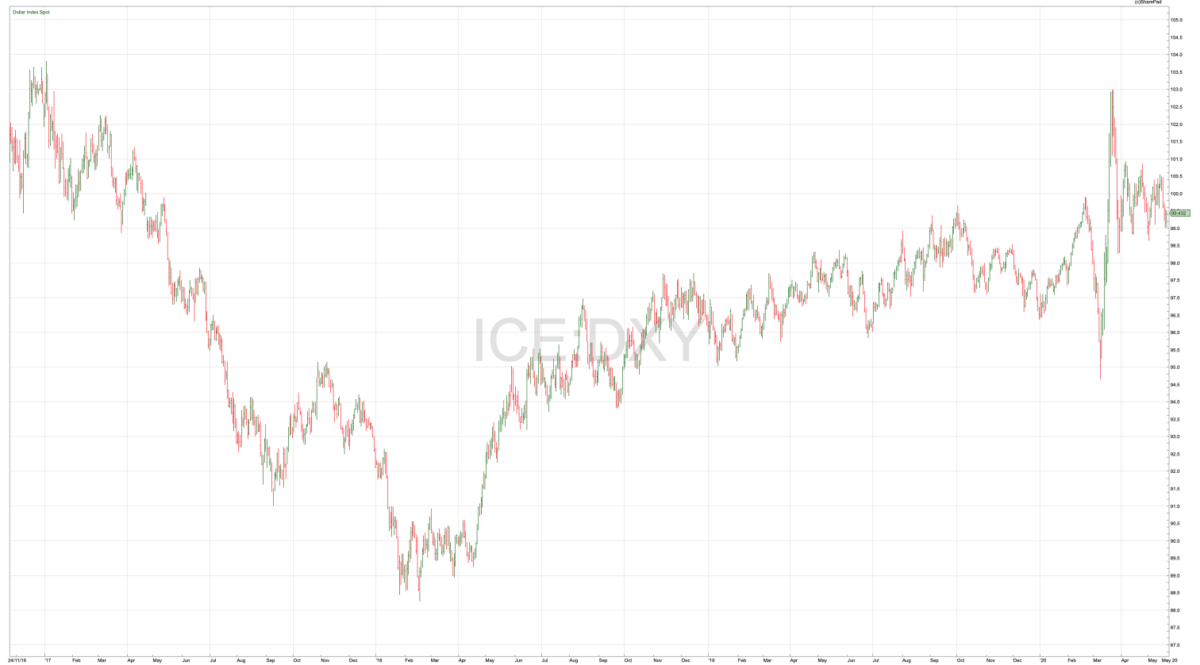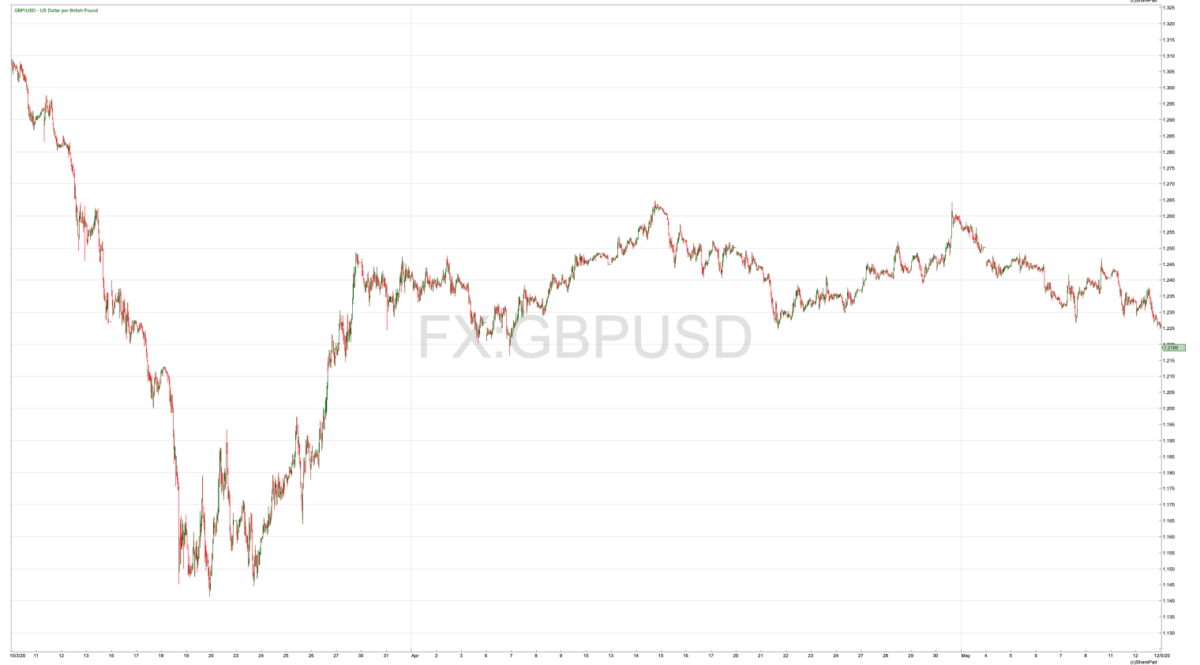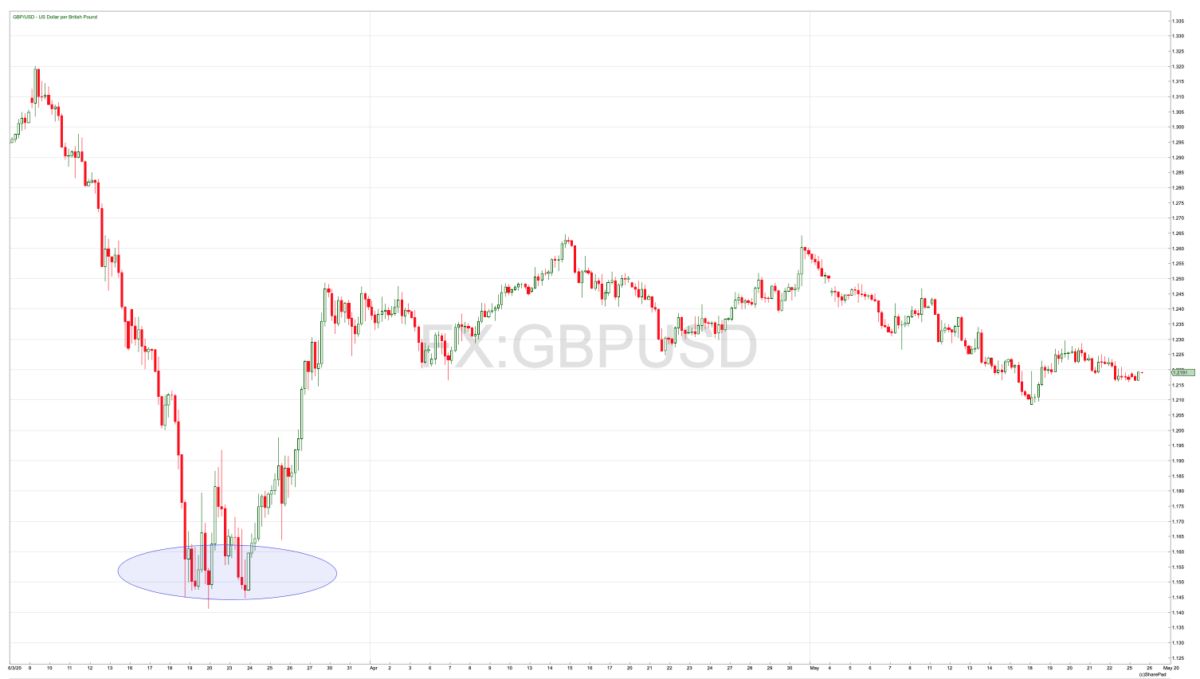Is the pound the bargain market of 2020?

With the pound at multi-decade lows against the dollar, David Jones considers whether now is the time to prepare for a recovery in this much-maligned currency.
In March of this year, the pound/US-dollar exchange rate touched its lowest level since 1985 – a generational low, driven down there by the coronavirus crisis. The market has bounced back since then, but if you believe there is still much more recovery to come, there is a way you can take advantage of this via spread betting, without having to worry too much about day-to-day movements.
Extreme pessimism as 1985 levels retested
Like many traders, I do love looking at a chart − and as we are considering this three-decade-plus low for the pound, it seems the best way to kick things off.
GBP/USD 1983 to present

Looking at the chart above, the pound has been in decline against the US dollar since the financial crisis – back then, one pound would buy slightly more than two US dollars in November 2007. Since then it has been in reverse, accelerated by the UK’s vote to leave the EU in June 2016 and the more recent shockwaves caused by the worldwide pandemic, the corresponding global shutdown and various government-support programmes for different sections of the economy. At its most recent low, GBP/USD traded down to around the 1.14 point, marking a decline of 46% from the November 2007 highs.
Why has the pound been so weak?
Coming into the coronavirus crisis, the pound had experienced significant volatility since the EU referendum back in June 2016. Whether a Leaver or Remainer, I am sure you do not need me to remind you of the political indecision and lack of certainty the UK has experienced since then, as various attempts to “Get Brexit Done” have floundered over the years. Following the December 2019 UK general election which saw Boris Johnson’s Conservative party win a larger-than-expected majority, GBP/USD hit its best levels in 18 months, trading up to 1.35. But just three months later the pound had fallen by 15%.
GBP/USD October 2019 to present

The exchange rate had been drifting lower since its election-night surge, but it was on 12 March when it really fell off a cliff. Indeed, over the next six days it had lost more than 10% of its value against the US dollar. But the pound was not the only market heavily hit – the euro/US-dollar exchange rate also plunged, although not by as much as the UK currency.
What we were seeing here was US-dollar strength across the board. In times of trouble and uncertainty, investors look for a safe destination for their cash. Gold is perhaps the more familiar safe destination but, in recent years, the US dollar has also found favour when markets have hit bumpy times. All world economies are set to take a major hit − but if anything was going to prove resilient (or perhaps, less vulnerable) investors were happy to bet it was the world’s unofficial reserve currency.
US-dollar index November 2016 to present

As the chart above shows, even as the pandemic was at its height, the US-dollar index (the dollar against a basket of world currencies) was hitting a three-year-plus high, admittedly after some very volatile daily movements.
Will the coronavirus cost cripple the pound?
The UK government shocked many with its support for businesses hit by the effects of the virus. For example, many employees have been furloughed, with the UK government meeting all or at least some of their monthly salary. At the beginning of May, nearly a quarter of all UK employees were part of the furlough scheme. Even some of the government’s harshest critics found it difficult to fault the approach of ensuring that at least some money kept coming in while we were forced to stay at home due to the UK lockdown.
But of course, this support does not come free. It is still too early to figure out what the total cost will be to the UK government and the longer-lasting toll it has taken on the economy. The government’s own Office for Budget Responsibility has already said that borrowing could hit almost £300bn this year – five times the amount estimated in the last budget which − let’s not forget − was only in March.
We are all in this together
The UK economy is not an island − all major economies have felt the impact of this pandemic and have a steep hill to climb to get back to anything approaching normal. Looking at the pound, I think the immediate question is whether the market reaction over recent months has gone too far. In the short term at least, this does seem to be the case, given how quickly GBP/USD rebounded from those 1985 levels.
GBP/USD 10 March to present day

The exchange rate hit 1.14 on 19 March – but was back at 1.24 a little over a week later. Since then, during April and May, trading has been a lot calmer with GBP/USD stuck in something of a sideways range.
How to play a longer-term move in exchange rates
As this column is on spread betting, let’s get to the heart of a way to trade a bigger recovery (or for that sake, decline) in the pound for the rest of 2020. There is a misconception amongst some that products such as spread betting are only for ‘high-octane’ day traders, stuck in front of their screen 24/7 trying to figure out what the direction of the Dow Jones will be over the next two minutes. While of course it is true that some do use it in this way – and the brokers love them for it, for the constant churn of trading activity and the associated spread – you do not have to do the same. Many spread-betting companies offer quarterly contracts, which can be used to take a longer-term view of the more popular financial markets out there.
At the time of writing the spot price of GBP/USD was 1.2190. As this is such a popular market, the spot price has a very tight spread − sometimes less than one point (which in the case of the pound is the fourth decimal place). But there are also the quarterly contracts – the September contract for the pound/US-dollar exchange rate was 1.2200 to buy. Admittedly, the longer-term contracts have a wider spread – the quarterly contract was around 10 points spread rather than one.
But, if you are looking for a larger move in the market, these longer-dated contracts make sense. There is no additional financing cost – the cost of the leverage that all of these products use is built into the price already. Of course, you do not need to hold the position all the way into expiry – if you change your mind a minute later you can close the position as normal. And, if contract expiry approaches and you still want to run the trade for longer, then your position can be rolled into the next quarter for a minimal cost.
What about risk management?
Just because you are taking a longer-term view, it doesn’t mean that you can just forget about risk management and where to set a stop loss. I think the chart since those lows in March can give some pointers here.
GBP/USD March to present

I suppose the ultimate stop loss for this trading idea would be below those multi-year lows set in March. By definition, if the low at 1.14 gets breached then any hopes of a recovery in the pound seem to be somewhat premature. For those wanting a tighter stop loss, then the 1.20 area is one that could provide some sort of psychological support if the price were to start to weaken significantly again.
It’s far from guaranteed that the pound will see its fortunes reversed in the months ahead. There is still the spectre of Brexit and finalising some sort of deal with the EU. The government is adamant this needs to be done before the end of the year – and we all have experience of how discussions and delays around Brexit can unnerve financial markets. But given the extreme move of the pound in March, if you do feel there is a greater recovery to come, there is a way of taking a position without having to get too bogged down in the day-to-day movements of the price.
Comments (0)